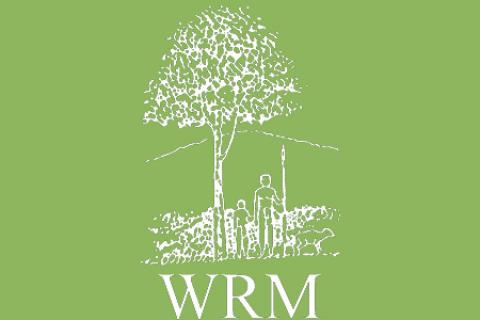Malaysian logging companies have recently expanded to a large number of Southern countries. Even if Malaysian authorities have publicly urged their home-based companies to operate within the law and to be sensitive to environmental issues in their activities abroad, this expansion -that has been promoted by the government itself- has proved detrimental to the people and the forests in host countries' remaining rainforests. Countries in different continents, like Papua New Guinea, Brazil, Guyana, Belize, Cameroon and Cambodia have witnessed the way these companies work.
Bulletin articles
The big landowner Bishop Estate, which owns the sugar lands of Hamakua, has 12,000 acres planted and 4,000 acres more to expand its eucalyptus plantations. The company is also planting 5,000 acres down south in Ka'u. Also Parker Ranch is beginning to lease another 10,000 acres to eucalyptus. Additionally, concern is increasing among ranchers, since ponds are diminishing their yield because of the presence of eucalyptus monocultures, which can be intensifying the effects of drought. Ranchers are extremely upset that eucalyptus is taking over much of the land.
Meeting in Moruya over the weekend the National Forest Summit, Australia's major body representing forest campaign groups, has roundly condemned the federal Government's push for an Australian Forestry Standard in the face of growing calls for "certified" wood.
Internationally, consumers are demanding wood products that can be certified as having been sourced from forests that have been managed sustainably. The most well known of these management standards is that developed by the Forest Stewardship Council, which has now certified over 18 million hectares worldwide.
Indiscriminate logging has been the main cause for the decline of Papua New Guinea's rainforests, that the government has been unable to stop in spite of the announced moratorium on the activities of timber companies. Unfortunately, this is not the only depredatory economic activity that affects the country's forests. Mining is also producing important impacts at the local level. For example, Freeport-Rio Tinto's mining operations at Ajkwa River's watershed has had severe effects on the environment and the level of mercury in this river is four-times higher than the maximum allowed.
On a group of Melanesian islands in the South Pacific, a tragic plunder is taking place. Logging by mainly Malaysian companies has escalated in the last five years to more than 3 times the estimated sustainable yield. In other words the forests are being logged at more than three times faster than they are growing. In less than ten years all the productive lowland forests will be logged. The forests are rich tropical rainforests with thousands of unique plants and animals. As well, a diversity of cultures and people who customarily own and rely on the forests are under threat.
Gabon's primary rainforests are disappearing at a high speed. Logging of precious tropical wood is practised as a depredatory activity, where transnational logging companies, that hold huge concessions, make big money, while local communities have to bear the costs (see WRM Bulletin 28).
The Ogiek people of Kenya -a minority forest-dwelling community currently composed of some 20,000 people- who have lived from time immemorial in the highland Tinet forest area of Molo in Nakuru District, have been defending their rights for decades against the arbitrariness of both colonial and post-colonial governments, which progressively pushed them to marginal areas. Only in 1991 their territorial rights were partially recognized and a portion of Tinet forest was granted to them.
During the first years of the 1990s Liberia was the scenario of a civil war which left 150,000 fatal victims and one million people displaced or leaving the country as refugees. From January to November 1996 the war was triggered again until finally presidential elections took place in 1997. Governments of neighbouring countries, as well as European governments and companies -particularly Belgian and French- were involved in the delivery of weapons to the different groups engaged in the conflict, in exchange for gold, diamonds and roundwood.
In October 1999 the Nigerian Minister of the Environment himself blamed multinational oil companies for the situation reigning in the Niger Delta, and gave them a six-week ultimatum to clean up the communities' environment affected by several oil spills (see WRM Bulletin 28). However, nothing much seems to have changed.
During the decade of the 1990s the Cambodian government, supported by the World Bank, tried to promote large-scale industrial shrimp farming in the coastline of the country. In 1993, the Mangrove Action Project (MAP) helped to avoid that the Thai agri-business giant Charoen Pokphand opens up Cambodia's mangrove coasts to a black tiger prawn culture project. Nevertheless, the idea was not abandoned, and new investors from Thailand subsequently financed intensive black tiger shrimp aquaculture operations in Cambodia, importing equipment, expertise and even feed to that purpose.
Runaway logging in the Malaysian state of Sarawak has been a major concern for environmentalists since the mid-1980s. The issue gained international prominence in 1987, when indigenous Dayaks, their patience exhausted after decades fruitlessly demanding recognition of their land rights, erected barricades across logging company roads to halt the destruction of their forests.
Massive protests against dam megaprojects have taken place in Thailand due to their negative social and environmental impacts. The cases of Pak Mun Dam (see WRM Bulletin 22 and new article in this issue) and Rasi Salai Dam (see WRM Bulletin 27) are perhaps the most notorious even if not the only ones. Now Thailand is trying to export this destructive model to neighbouring Myanmar (formerly Burma).
